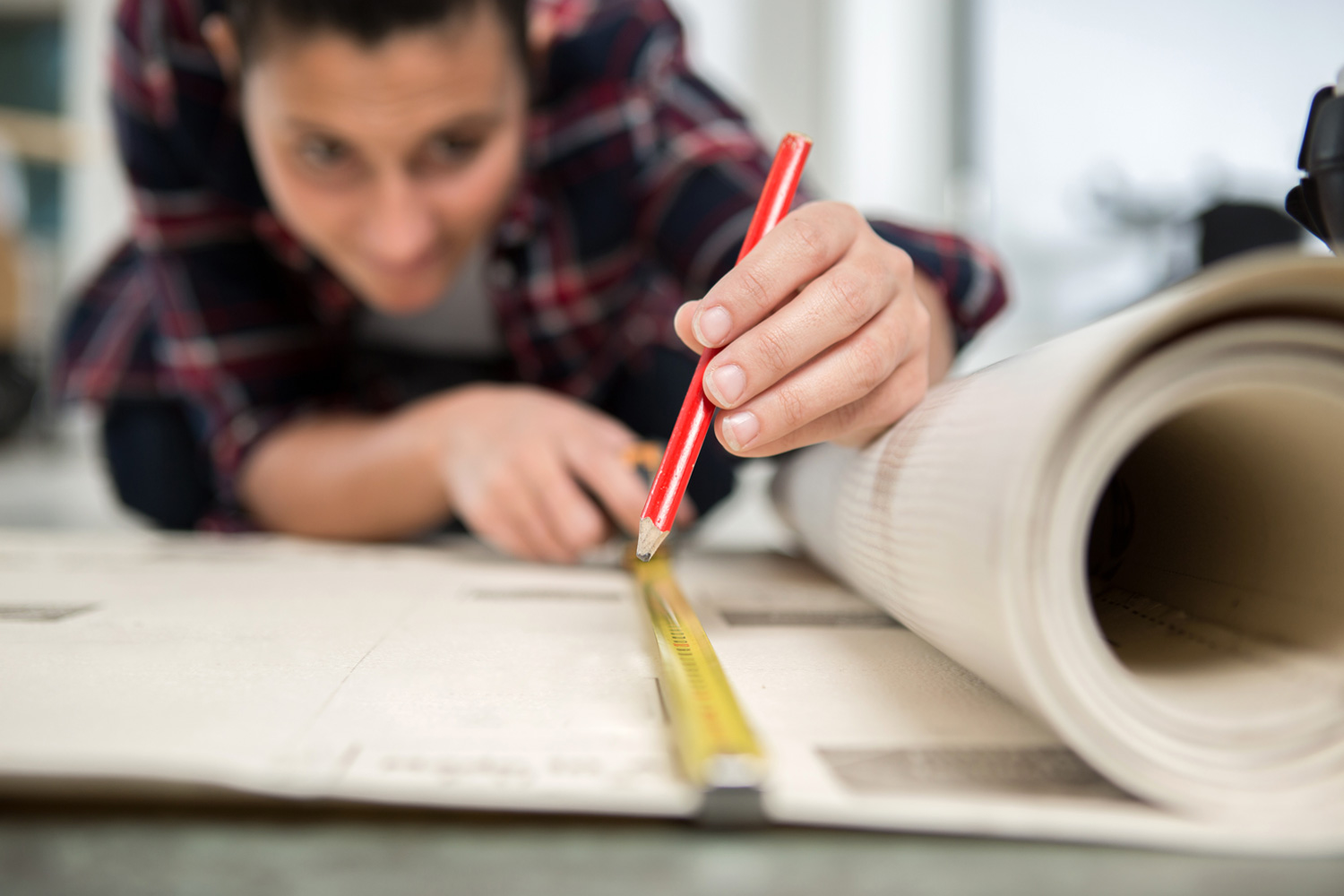
How To Measure for Flooring: Laminate, Tile, Hardwood, Carpet & More
Flooring is a big investment.. DIYing your floor installation can save you hundreds of dollars. However there are a few things you have to consider before starting — and the first and most important thing you must do is measure your space. We will walk you through what you’ll need to measure your flooring.
Here what you will need...
Step 1: Measure the room (all flooring types)
Measure for the square footage. This is the first step you’ll need to take to measure your room. To do this, simply use a tape measure to determine the room’s length and width, then multiply them together to get the square footage.
If you are working with an irregularly shaped room, just remember that rooms can be broken down into a series of rectangles. Draw out a floor plan, divide it into regular shapes, calculate the square footage of each section and add them together.
Step 2: Subtract for permanent objects in the room
You will need to factor in permanent objects like islands and staircases. Calculate the square footage for the permanent objects (width x length) and subtract these from the square footage of your usable floor space.
Step 3: Add to your measurements to factor in waste
Every flooring project requires cuts to make an exact fit. This means you’ll need to account for wasted materials.
The waste you need to account for depends on...
-
DIY project vs. professional installation
-
Rooms with complicated shapes
-
Permanent objects that need to be worked around
Professional installers get away with 5% waste, if you’re tackling a DIY flooring project it’s safe to plan for a waste of 10%.
Different flooring materials will also determine how much material waste you need to plan into your materials.
Stone and ceramic tiles
Stone and ceramic tiles tend to break in the process of cutting and laying flooring. For this reason, we recommend purchasing 20% more materials than your baseline.
An easy way to determine how many tiles you’ll need is to divide the square footage of your room by the number associated with the tile size below.
4" x 4" / 0.1089
6" x 6" / 0.25
9" x 9" / 0.5625
12" x 12" / 1
18" x 18" / 2.25
Hardwood, laminate and vinyl plank flooring
Hardwood, laminate and vinyl floor boards typically have a lower waste factor since these materials are not as fragile during installation like tile. It’s therefore generally safe to plan for a 10%-15% waste factor on top of your measurements.
Find this by taking the square footage of the room and multiplying it by .15. For example, if you’re laying hardwood flooring for a 200-square-foot room with a waste factor of 15%, then you’ll need 230 square feet of actual flooring (200 x .15 = 230).
Carpet flooring
Carpet typically has the lowest waste of all flooring. Typically, a 5% waste should be factored into your measurements. For example: If you need to lay down carpet for 200 square feet of space with a waste factor of 5%, then you’ll want to purchase 210 square feet of carpet flooring.
Step 4: Consult a professional
Even if you’re planning a DIY flooring project, it’s a good idea to consult with a professional. If you have any questions, give Goshen Floor Mart a call!

If you're in the market for flooring feel free to contact Goshen Floor Mart. Remember, we are always happy to provide you with a free estimate. Call us today at 574.642.4770 or contact us here
